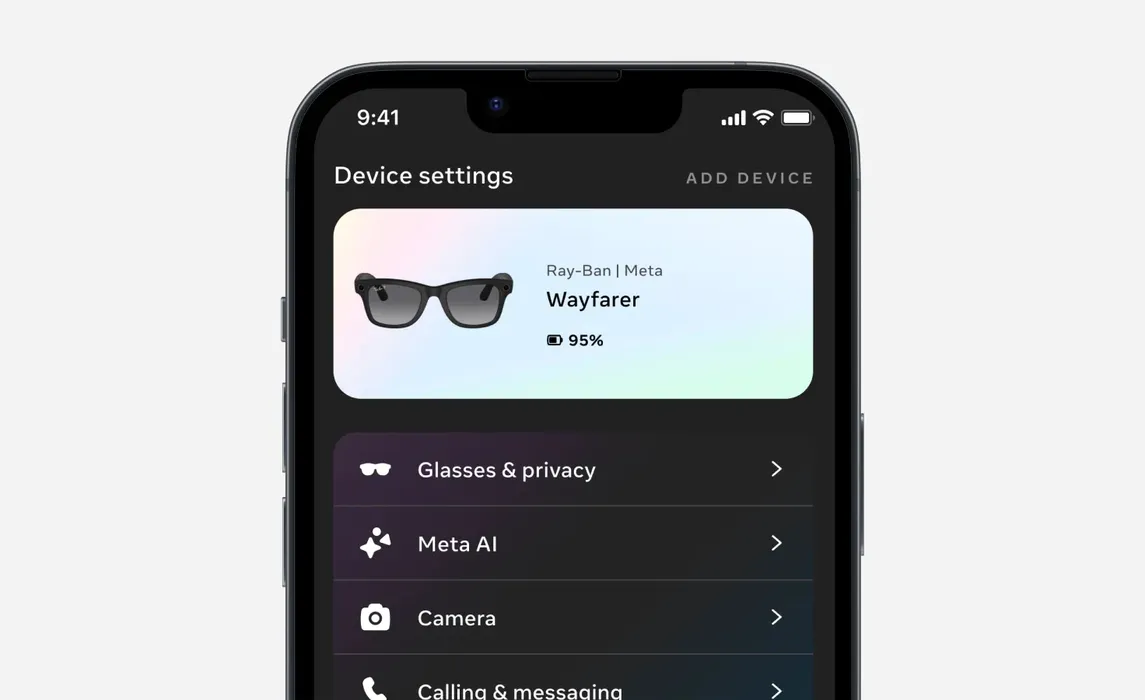
Charles R. Goulding and Preeti Sulibhavi provide some insight into Meta’s rumored investment of US$5 billion in EssilorLuxottica, thereby combining Meta’s metaverse ambitions with Luxottica’s eyewear dominance and exploring the future of smart glasses through 3D printing.
Meta, formerly known as Facebook, is rumored to be considering a US$5 billion investment for a 5% stake in EssilorLuxottica, the global eyeglass retail giant. This potential transaction could mark a pivotal moment for both companies, combining Meta’s push to expand the “Metaverse” with EssilorLuxottica’s dominance in the eyewear market. Meta and EssilorLuxottica, specifically through the Ray-Ban brand, have already found success together with their smart glasses. The second generation of Ray-Ban Meta smart glasses, launched in September 2023, exceeded sales expectations, signaling a growing market for wearable technology. The third generation, expected to hit the market in 2025, promises to bring even more advanced features, including a built-in display. We have covered the use of eyewear for other purposes, when we reported on the “specaids” trend (comfortable hearing aids for eyewear). But the smart glasses trend takes the multi-tasking to an entirely new level.
In this context, one area that is gaining attention is 3D printing, a technology that has the potential to revolutionize how smart glasses are designed, manufactured, and sold. With Meta’s ambition and EssilorLuxottica’s manufacturing expertise, this partnership could introduce 3D printing into the production of next-generation smart glasses, speeding up design iterations, cutting production costs, and even offering more customizable options for consumers. We have covered customer-based, customizable eyewear before when we reported on Fitz Frames and Marcolin previously.
Now, we explore the strategic implications of Meta’s potential investment in EssilorLuxottica, delves into the role of 3D printing in eyewear manufacturing, and highlights examples of how 3D printing has already been integrated into Luxottica’s operations.
Luxottica: The Global Eyewear Powerhouse
EssilorLuxottica, commonly referred to as Luxottica, is a global leader in the eyewear industry, producing and selling frames for major brands like Ray-Ban, Oakley, and Persol, as well as luxury brands including Prada, Chanel, and Versace. Luxottica controls both the design and retail aspects of its products through its ownership of prescription eyewear retailers like LensCrafters, Pearle Vision, and Sunglass Hut.
Luxottica’s influence on the global eyewear market is immense. The company’s portfolio includes over 30 brands that range from affordable to high-end, allowing it to dominate multiple market segments. This gives Luxottica the perfect platform to introduce innovative products, such as smart glasses, that blend technology with fashion.
By investing in Luxottica, Meta would be partnering with a company that controls a substantial portion of the global eyewear market, offering access to distribution channels, retail stores, and manufacturing expertise. This investment could also lead to further integration of emerging technologies, such as augmented reality (AR), virtual reality (VR), and 3D printing, into the design and production of smart eyewear.
Customization and Rapid Prototyping
One of the most significant advantages of 3D printing is the ability to create customized eyewear tailored to individual face shapes and preferences. Traditionally, eyewear frames are manufactured in bulk, and consumers choose from pre-made designs. However, 3D printing allows for bespoke frames, which can be designed based on detailed facial measurements and user preferences. This could be particularly advantageous for smart glasses, where fit and comfort are essential for prolonged use.
Additionally, 3D printing significantly reduces the time needed for prototyping. Instead of relying on traditional mold-making techniques, manufacturers can quickly create multiple iterations of a frame design, allowing for faster testing and adjustments. This is particularly beneficial in the fast-paced world of technology, where innovation cycles are short, and time-to-market is crucial.

Lightweight and Durable Materials
Another advantage of 3D printing is the use of advanced materials that can produce lightweight, durable, and flexible frames. Given that smart glasses house various electronic components, including cameras, sensors, and batteries, minimizing weight without compromising strength is critical. Using 3D-printed materials, designers can optimize the structure of the frames to accommodate these components while ensuring comfort for the user.
Sustainability and Reduced Waste
3D printing also offers sustainability benefits by reducing waste in the production process. Traditional eyewear manufacturing involves cutting frames from large blocks of material, resulting in significant waste. In contrast, 3D printing uses only the material necessary for the frame, making it a more eco-friendly option. This aligns with Meta’s broader commitment to sustainability and responsible manufacturing, adding another layer of synergy between the two companies.
Luxottica and 3D Printing: A Natural Fit
Luxottica has already recognized the potential of 3D printing in eyewear production. The company has experimented with 3D printed frames in several of its collections, including its luxury brands and Ray-Ban. In fact, Ray-Ban’s collaboration with Meta for smart glasses represents an ideal opportunity to leverage 3D printing to improve the design, comfort, and functionality of these high-tech devices.
For example, in 2017, Luxottica introduced 3D-printed eyewear frames under the brand OOY. The collection featured lightweight, flexible frames made using 3D printing technology. This initiative demonstrated Luxottica’s commitment to integrating cutting-edge technology into its manufacturing processes. As 3D printing technology has advanced, so too has Luxottica’s ability to produce more intricate and durable frames.
Luxottica has also invested in partnerships with leading technology companies to further its capabilities in 3D printing. The company collaborated with Carbon, a Silicon Valley-based 3D printing startup, to explore innovative manufacturing solutions for eyewear. Carbon’s proprietary Digital Light Synthesis (DLS) technology allows for the creation of complex, high-performance products that are lightweight and durable—ideal characteristics for smart glasses.

Meta’s Vision: 3D Printing and the Future of Smart Glasses
Meta’s investment in Luxottica would not only provide access to the company’s vast retail network but also to its advanced manufacturing capabilities, including 3D printing. The potential for customization, rapid prototyping, and sustainable production aligns with Meta’s goals for the Metaverse and wearable technology.
The third-generation Ray-Ban Meta smart glasses, expected to launch in 2025, will reportedly feature a small screen display, allowing users to interact with the digital world in new ways. Integrating 3D printing into the design and production of these glasses could allow Meta and Luxottica to experiment with different frame designs, improve the comfort and durability of the glasses, and potentially lower production costs by streamlining the manufacturing process.
Furthermore, 3D printing could enable greater personalization for consumers, allowing them to choose from a range of designs, colors, and finishes tailored to their preferences. This level of customization would set Meta’s smart glasses apart from competitors, offering a more personalized and fashionable product that appeals to a broad audience.
Recent Examples of 3D Printing in Smart Glasses
While there are no specific public examples of Luxottica using 3D printing in the Ray-Ban Meta smart glasses yet, the use of 3D printing in wearable tech is becoming more common across the industry. For instance, Vuzix, a company specializing in AR smart glasses, has utilized 3D printing to create lightweight and ergonomic designs. Similarly, Google Glass experimented with 3D-printed frames in its early iterations, demonstrating the potential for this technology in the smart glasses market. Given Luxottica’s previous use of 3D printing in eyewear and its collaborations with companies like Carbon, it’s plausible that 3D printing will play a role in the development of future generations of Ray-Ban Meta smart glasses, particularly as the demand for more lightweight, durable, and customizable smart eyewear grows.

The Research & Development Tax Credit
The now permanent Research and Development (R&D) Tax Credit is available for companies developing new or improved products, processes and/or software.
3D printing can help boost a company’s R&D Tax Credits. Wages for technical employees creating, testing and revising 3D printed prototypes can be included as a percentage of eligible time spent for the R&D Tax Credit. Similarly, when used as a method of improving a process, time spent integrating 3D printing hardware and software counts as an eligible activity. Lastly, when used for modeling and preproduction, the costs of filaments consumed during the development process may also be recovered.
Whether it is used for creating and testing prototypes or for final production, 3D printing is a great indicator that R&D Credit-eligible activities are taking place. Companies implementing this technology at any point should consider taking advantage of R&D Tax Credits.
Conclusion
Meta’s potential $5 billion investment in EssilorLuxottica could mark the beginning of a new era for smart glasses, combining Meta’s technological innovations with Luxottica’s retail and manufacturing prowess. 3D printing plays a critical role in this evolution, offering customization, rapid prototyping, and sustainable production methods that could revolutionize the smart eyewear market.
As 3D printing technology continues to evolve, we can expect to see even more innovative applications in the design and production of smart glasses, paving the way for Meta and Luxottica to lead the way in the next generation of wearable technology.
